The House Sparrow is an extremely widespread little bird. Humans have introduced this species into several regions outside of their natural range in Eurasia.
Nowadays, you can find them in North, Central, and South America, as well as Eurasia, Africa, and Australia. They often live in cities, parks, suburbs, farms, and other urban areas. Read on to learn about the House Sparrow.
Description of the House Sparrow
Male and female House Sparrows look similar, but males are slightly darker in color, and have a black patch on their throat. The top half of this bird’s body is dark brown with black mottling, and its underside is lighter tan. Its beak is short and thick to better crack open seeds.
This species has a stout body, short legs, and a short tail. Most of these sparrows measure about six inches long, and weigh around an ounce or so. Their wingspan measures around eight or nine inches across.
Interesting Facts About the House Sparrow
These little birds live across many different regions of the world. They are adaptable and hardy, making them tough as an invasive species – learn more about them below.
- Not Quite Like Hummingbirds – Many animals utilize the nectar of flowers as a food source, and in most cases this is beneficial for both the bird and the flower. Hummingbirds, bees, and other animals use long bills or mouthparts to feed on the nectar, and in the process collect pollen and transport it to other flowers. House Sparrows cheat, and bite holes in the bottom of the flower to eat the nectar, which doesn’t help pollination at all!
- Squatters – Though these little birds do build their own nests, it is always easier to steal someone else’s work! Researchers have recorded several different incidences of House Sparrows taking over the nests of other birds. Swallows, purple martins, and bluebirds all suffer from this bird’s nest-robbing.
- Food Source – Though invasive, these birds don’t impact everything in a negative way. Predators sure appreciate the extra food! Many different animals hunt these sparrows, including feral cats, hawks, falcons, owls, crows, foxes, and even squirrels.
Habitat of the House Sparrow
This species lives in a vast array of different habitats. Some of the natural habitats that they live in include forests, meadows, grasslands, deserts, desert edges, woodlands, and more. The vast majority of their population lives in urban areas.
They inhabit cities, parks, suburbs, backyards, farms, orchards, and any number of different manmade habitats. Their flexibility is the primary reason why they are such a successful invasive species.
Distribution of the House Sparrow
House Sparrows are incredibly widespread and live across vast regions of the world. Their natural range extend throughout most of Europe, through the Middle East and into most of Asia. They also naturally live in portions of northern Africa.
Humans have introduced this species into several different areas. In North America, they live from the edge of the Arctic Circle in Canada throughout the United States and Mexico, and into Central and South America. In South America they live virtually everywhere but the Amazon Basin. People also introduced this species to southern Africa and eastern Australia.
Diet of the House Sparrow
These birds are omnivores, and they eat a variety of plants and small animals, primarily invertebrates. Seeds make up the majority of their diet, but they also eat some insects and other invertebrates. Despite their label as an agricultural pest, these birds usually eat wasted seed, primarily those passed through the digestive system in livestock dung.
Birds in cities eat birdseed from bird feeders, and also feed on the seeds of weeds and other plants, as well as human food scraps. They forage for food by hopping along the ground.
House Sparrow and Human Interaction
Humans and House Sparrows interact incredibly frequently, and the sparrows live their lives closely entwined with humans and manmade habitats. They thrive in cities, suburbs, and farms.
Unfortunately, as invasive species, these sparrows displace native songbirds for food and nesting locations. Their worldwide populations are huge numbers, but populations in some regions are on the decline. The IUCN lists the House Sparrow as Least Concern.
Domestication
Humans have not domesticated House Sparrows in any way.
Does the House Sparrow Make a Good Pet
No, House Sparrows do not make good pets. Humans have attempted to keep them as pets, but they do not thrive in a household setting. Additionally, they are not the most colorful of birds, and their song is not particularly catchy or melodic.
House Sparrow Care
When in human care, House Sparrows need lots of space and plenty of opportunity to socialize. They have a surprisingly complex social pecking order, and thrive in an aviary-style enclosure with plenty of space to get away from competitors.
Their aviaries must also provide a variety of perches, shrubbery, and other features to explore. Their diet is similar to that of other finches, and consists primarily of seeds, as well as fruits and berries, crickets, mealworms, and other insects.
Behavior of the House Sparrow
These birds are diurnal, and most active during the day. They spend their day hopping along the ground in search of food or flitting from branch to branch. While they are not breeding, they are quite social birds, and forage in small groups known as flocks.
Pairs of these sparrows defend a small area around their nests. Being surprisingly aggressive around their nests and territories, they do not hesitate to attack other birds who get too close.
Reproduction of the House Sparrow
This species is monogamous and usually only breeds with one partner for a season. Females lay an average of five eggs per clutch, and both sexes participate in incubation duties. The incubation period lasts about two weeks.
The young chicks are naked and helpless when they hatch, and both parents brood them to keep them warm. Both the male and the female also feed the chicks. It takes just two weeks for them to grow their feathers and begin leaving the nest.
Beliefs, Superstitions, and Phobias About the House Sparrow
Because they are so commonly associated with people, House Sparrows are present in many different cultures. They are depicted in stories, folklore, artwork, and more. Scholars also mention sparrows in general in different works, religions, and cultures. These particular sparrows even have their own Egyptian hieroglyph!

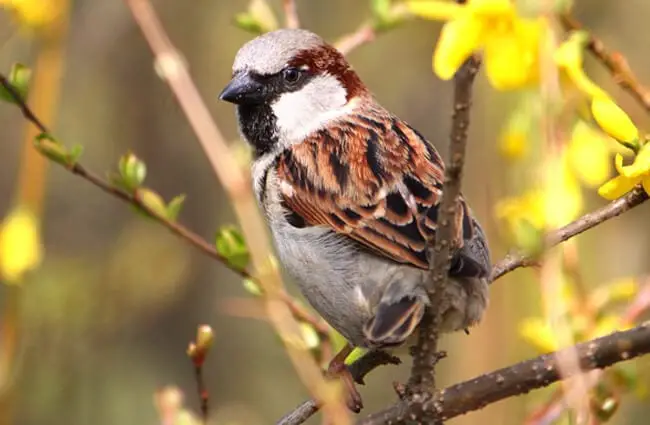



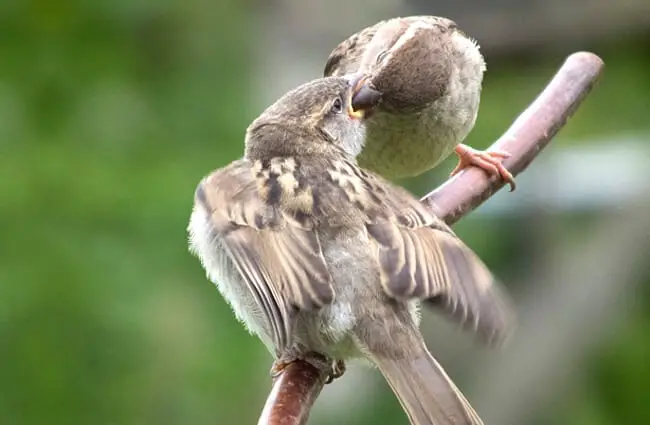

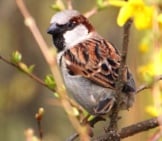

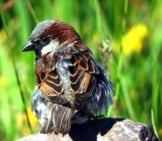


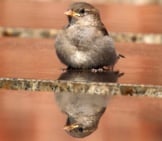
![Red Angus Closeup of a beautiful Red Angus cowPhoto by: U.S. Department of Agriculture [pubic domain]https://creativecommons.org/licenses/by/2.0/](https://animals.net/wp-content/uploads/2020/03/Red-Angus-4-238x178.jpg)












![Red Angus Closeup of a beautiful Red Angus cowPhoto by: U.S. Department of Agriculture [pubic domain]https://creativecommons.org/licenses/by/2.0/](https://animals.net/wp-content/uploads/2020/03/Red-Angus-4-100x75.jpg)

